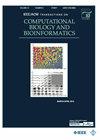采用约束解码策略的生成式生物医学事件提取。
IF 3.4
3区 生物学
Q2 BIOCHEMICAL RESEARCH METHODS
IEEE/ACM Transactions on Computational Biology and Bioinformatics
Pub Date : 2024-10-14
DOI:10.1109/TCBB.2024.3480088
引用次数: 0
摘要
目前,生物医学事件提取已在自然语言处理、生物信息学和计算生物医学等多个领域受到广泛关注。为解决这一复杂任务,人们提出并应用了大量机器学习和深度学习模型。现有模型通常采用基于提取的方法,这需要将生物医学事件的提取分解成多个子任务进行顺序处理,因此容易出现层叠错误。本文提出了一种新方法,即在预训练语言模型 T5 的框架基础上构建生物医学事件生成模型。我们采用序列-序列生成范式来获取事件,模型利用约束解码算法来指导序列生成,并利用课程学习算法来实现高效的模型学习。为了证明模型的有效性,我们在两个公共基准数据集(Genia 2011 和 Genia 2013)上对其进行了评估。我们的模型取得了优异的性能,说明了生物医学事件生成模型的有效性。本文章由计算机程序翻译,如有差异,请以英文原文为准。
Generative Biomedical Event Extraction With Constrained Decoding Strategy
Currently, biomedical event extraction has received considerable attention in various fields, including natural language processing, bioinformatics, and computational biomedicine. This has led to the emergence of numerous machine learning and deep learning models that have been proposed and applied to tackle this complex task. While existing models typically adopt an extraction-based approach, which requires breaking down the extraction of biomedical events into multiple subtasks for sequential processing, making it prone to cascading errors. This paper presents a novel approach by constructing a biomedical event generation model based on the framework of the pre-trained language model
T5
. We employ a sequence-to-sequence generation paradigm to obtain events, the model utilizes constrained decoding algorithm to guide sequence generation, and a curriculum learning algorithm for efficient model learning. To demonstrate the effectiveness of our model, we evaluate it on two public benchmark datasets, Genia 2011 and Genia 2013. Our model achieves superior performance, illustrating the effectiveness of generative modeling of biomedical events.
求助全文
通过发布文献求助,成功后即可免费获取论文全文。
去求助
来源期刊
CiteScore
7.50
自引率
6.70%
发文量
479
审稿时长
3 months
期刊介绍:
IEEE/ACM Transactions on Computational Biology and Bioinformatics emphasizes the algorithmic, mathematical, statistical and computational methods that are central in bioinformatics and computational biology; the development and testing of effective computer programs in bioinformatics; the development of biological databases; and important biological results that are obtained from the use of these methods, programs and databases; the emerging field of Systems Biology, where many forms of data are used to create a computer-based model of a complex biological system

 求助内容:
求助内容: 应助结果提醒方式:
应助结果提醒方式:


